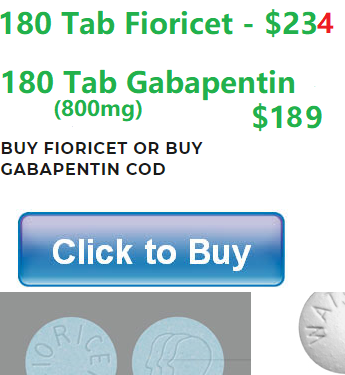We sell online Neurontin ( The Generic Name: Gabapentin ) that distributed by US licensed pharmacies. There are more than six warehouses in our Neurontin warehouses network.
All Neurontin Pharmacies associated are licensed to distribute in the states, you can be 100% sure to receive the same quality medication that you get from your local drug store.
the cheapest Gabapentin Online
Upon receiving a valid prescription of the product you buy. Our US licensed pharmacies will fill a prescription for a medication that is FDA approved. To assure confidentiality and privacy our US licensed Pharmacy will fill and ship your prescription in a discreet package.
You will receive a package that have doctor name and address and pharmacy name and address on the bottle.
Please pay Money Order to the USPS guy that send you package. USPS delivery fee is free. We do not charge any hidden fee. But We donot accept your personnel checks. If we received checks from you, all our online pharmacies will blacklist you from ordering Gabapentin online in the future.
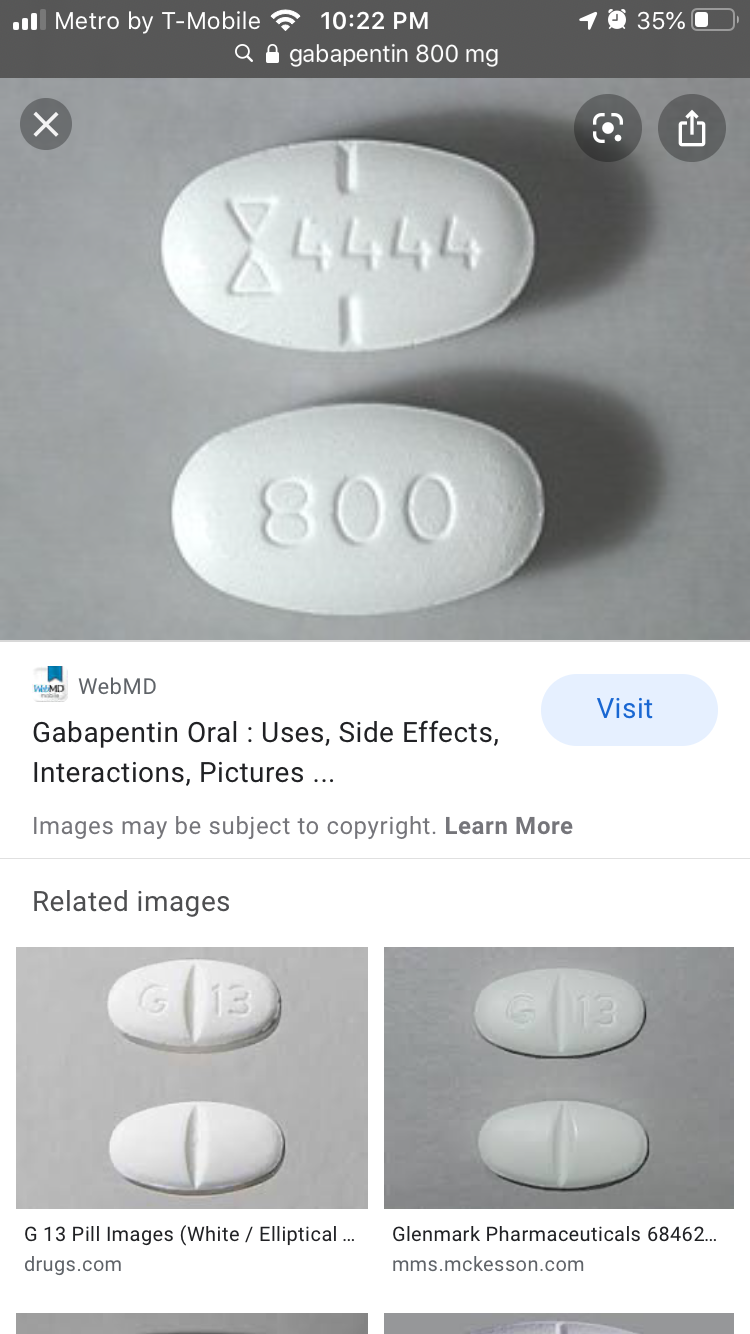
We are specializing on Pain Medications and we can provide the cheapest fioricet, the cheapest gabapentin online (buy neurontin® online). Once we receive your order, our US licensed pharmacies will fill a prescription for a medication that is FDA approved. If your order was approved by the doctors, the pharmacy will ship your orders in the same day it is approved or next business day.
Order your prescription drugs from Gabapentinneurontin.com and benefit from:
-
-
- Discreet, no cost medical consultations with US licensed doctors and pharmacists
- 100% FDA approved generic and branded prescription drugs sourced in the U.S.
- Free USPS Priority Mail shipping
- The security and accountability of a U.S. owned and operated business
- All Pharmacies associated are licensed to distribute in the states, you can be 100% sure to receive the same quality medication that you get from your local drug stores.
- Convenient 7 X 24 Access to Online Prescription Order System
- Save your Money and time
- Privacy Safeguarded Under Physician-Patient Privilege Law
- Save your insurance
-
Gabapentinneurontin.com does not dispense nor prescribe medication directly. It is still a US licensed pharmacy who has the final authorization to approve or deny prescription requests. Your Money is charged by the pharmacies directly.
About gabapentin – Brand name: Neurontin
Gabapentin is used to treat epilepsy.
It’s also taken for nerve pain, which can be caused by different conditions, including diabetes and shingles. Nerve pain can also happen after an injury.
In epilepsy, it’s thought that gabapentin stops seizures by reducing the abnormal electrical activity in the brain.
With nerve pain, it’s thought to block pain by affecting the pain messages travelling through the brain and down the spine.
Gabapentin is available on prescription. It comes as tablets, capsules and a liquid that you swallow.
Key facts
- You’ll usually take gabapentin 3 times a day. You can take it with or without food.
- Most people who take gabapentin do not get any side effects. But some people may feel sleepy, tired and dizzy. Common side effects are usually mild and go away by themselves.
- It takes at least a few weeks for gabapentin to work.
- Most people do not have to stay on the same brand of gabapentin as there’s very little difference between brands.
- Some people can become addicted to gabapentin after taking it for a long time. When stopping gabapentin you’ll need to reduce your dose gradually to avoid withdrawal symptoms.
- If you have epilepsy, you are entitled to free prescriptions for all the medicines you take, not just your epilepsy ones. You can get an application form from your doctor’s surgery.
Buy Neurontin Online
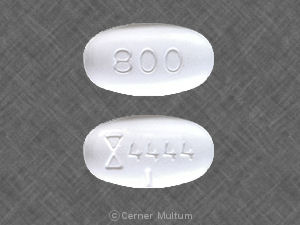 Generic Neurontin target is the treatment of seizures. Generic Neurontin can also be used to relieve the pain of diabetic neuropathy and postherpetic neuralgia. It is taken to prevent and treat hot flashes in women with menopause or breast cancer. Generic Neurontin can be used together with other seizures medicines. Gabapentin belongs to a class of drugs known as anticonvulsants, used to help control seizures in the treatment of epilepsy. Neurontin will only be able to control seizures for as long as you take it. It can’t cure epilepsy. The following step after being diagnosed is to work with your doctor in choosing the best treatment options for you.
Generic Neurontin target is the treatment of seizures. Generic Neurontin can also be used to relieve the pain of diabetic neuropathy and postherpetic neuralgia. It is taken to prevent and treat hot flashes in women with menopause or breast cancer. Generic Neurontin can be used together with other seizures medicines. Gabapentin belongs to a class of drugs known as anticonvulsants, used to help control seizures in the treatment of epilepsy. Neurontin will only be able to control seizures for as long as you take it. It can’t cure epilepsy. The following step after being diagnosed is to work with your doctor in choosing the best treatment options for you.
You can also buy Neurontin to treat attention deficit hyperactivity disorder (ADHD), alcohol withdrawal, chronic neuropathic pain, cocaine addiction, diabetic peripheral neuropathy, generalized anxiety disorder (GAD), fibromyalgia, menopause, migraine prevention, panic disorder, post-traumatic stress disorder (PTSD), social phobia, trigeminal neuralgia. It is also used to control pain associated with shingles and has been evaluated for pain conditions, including migraine, as its pain-modulating properties may regulate the perception of pain. Anticonvulsant drugs, such as gabapentin, are becoming increasingly popular for migraine prevention.
Generic Neurontin is acting by affecting certain nerves and chemicals which cause seizures and pain. It is anticonvulsant. Neurontin is a prescription drug that comes in 300 mg, 400 mg capsules, 600mg, 800mg tablets. It is available on prescription only as capsules for oral use, but the online pharmacy, will sell Neurontin without prescription. You may be able to order Neurontin from them online and save the local pharmacy markup.
Generic name of Generic Neurontin is Gabapentin. Brand names of Generic Neurontin are Neurontin, Gabarone.
Neurontin Frequently asked questions
Q: What does Generic Neurontin mean?
A: Generic Neurontin is the medication of high quality, which is taken in treatment of seizures. Generic Neurontin can also be used to relieve the pain of diabetic neuropathy and postherpetic neuralgia. It is taken to prevent and treat hot flashes in women with menopause or breast cancer. Generic Neurontin can be used together with other seizures medicines.
Q: What is the target?
A: The target of this perfect remedy is the treatment of seizures. Generic Neurontin can also be used to relieve the pain of diabetic neuropathy and postherpetic neuralgia. It is taken to prevent and treat hot flashes in women with menopause or breast cancer.
Q: What are Generic Neurontin side effects?
A: Generic Neurontin has its common side effects such as: lightheadedness, feeling drowsy, vomiting, weakness, tremor, fatigue, nausea, anxiety, migraine, uncontrolled body shaking, problems with memory, dry mouth, unwanted eye movements, heartburn, constipation, diarrhea, gain of weight, back pain, itchy or red eyes, arthralgia, high temperature, symptoms of the flu, pain of ear, problems with coordination, double or blurred vision. But in case of rejection of Generic Neurontin ingredients you can experience more serious side effects: amnesia, hyperactivity, emotional instability, thought disorders, aggressiveness, pruritus, convulsions, difficulties with swallowing, huskiness, symptoms of allergy reaction (hives, difficulties with breathing, rash, swelling, closing ), restlessness.
Q: What are generic and brand names of Generic Neurontin?
A: The brand names of Generic Neurontin are Neurontin, Gabarone. The generic name of Generic Neurontin is Gabapentin.
Q: In what way does Generic Neurontin operate?
A: Generic Neurontin is acting by affecting certain nerves and chemicals which cause seizures and pain. It is anticonvulsant.
Gabapentin is Newly Used For Migraine Prevention
Some people can prevent migraines by avoiding triggers. Others have prevented migraines successfully through relaxation techniques, acupuncture, or exercise. However, these therapies alone don’t work for everyone. Some people also need treatment with medication to reduce the number of migraines they have. The drugs used to prevent migraines are different from drugs that to treat migraines once a migraine starts. Drugs that prevent migraines, such as gabapentin, must be taken daily.
Gabapentin is one drug that researchers have studied for preventing migraines. It has a high safety profile and few side effects. This makes it a good option for prevention. Results from some clinical trials have shown a modest benefit from the use of gabapentin for migraine prevention. However, the American Academy of Neurology (AAN), the organization that provides guidance for the use of drugs to prevent migraines, has stated that there is not enough evidence at this time to support the use of gabapentin for migraine prevention. Healthcare professionals can choose to prescribe gabapentin when other prevention therapies have not worked, however.
The Other Uses of Gabapentin
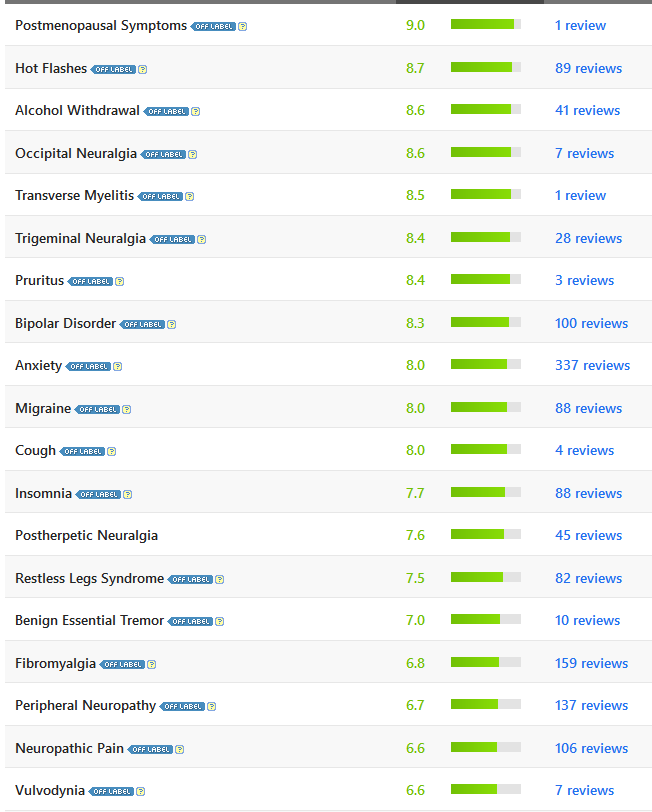
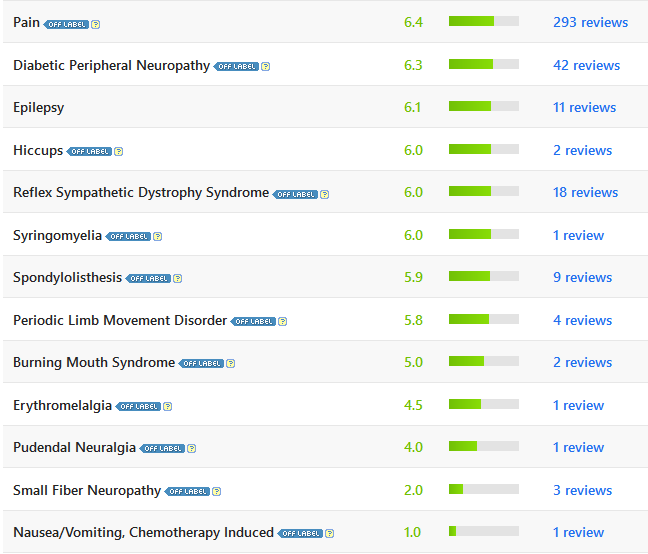
Gabapentin may be useful in the treatment of comorbid anxiety in bipolar patients, (however not the bipolar state itself). Gabapentin may be effective in acquired pendular nystagmus and infantile nystagmus, (but not periodic alternating nystagmus). It is effective in hot flashes. It may be effective in reducing pain and spasticity in multiple sclerosis. Gabapentin may reduce symptoms of alcohol withdrawal (but it does not prevent the associated seizures). Use for smoking cessation has had mixed results. Gabapentin is effective in alleviating itching in kidney failure (uremic pruritus) and itching of other causes. It is an established treatment of restless leg syndrome. Gabapentin may help sleeping problems in people with restless leg syndrome and partial seizures. Gabapentin may be an option in essential or orthostatic tremor.
Gabapentin May Increase Your Suicide Thoughts
Some people have thoughts about suicide while taking this medicine. Your doctor will need to check your progress at regular visits while you are using Neurontin. Your family or other caregivers should also be alert to changes in your mood or symptoms.
In 2009 the U.S. Food and Drug Administration issued a warning of an increased risk of suicidal thoughts and behaviors in patients taking some anticonvulsant drugs, including gabapentin, modifying the packaging inserts to reflect this. A 2010 meta analysis confirmed the increased risk of suicide associated with gabapentin use.
Gabapentin Overdose
Through excessive ingestion, accidental or otherwise, persons may experience overdose symptoms including drowsiness, sedation, blurred vision, slurred speech, somnolence and possibly death, if a very high amount was taken, particularly if combined with alcohol. For overdose considerations, serum gabapentin concentrations may be measured for confirmation.
How should I take Neurontin?
Take Neurontin exactly as prescribed by your doctor. Follow all directions on your prescription label. Do not take this medicine in larger or smaller amounts or for longer than recommended.
Neurontin can be taken with or without food.
If you break a Neurontin tablet and take only half of it, take the other half at your next dose. Any tablet that has been broken should be used as soon as possible or within a few days.
Measure liquid medicine with the dosing syringe provided, or with a special dose-measuring spoon or medicine cup. If you do not have a dose-measuring device, ask your pharmacist for one.
If your doctor changes your brand, strength, or type of gabapentin, your dosage needs may change. Ask your pharmacist if you have any questions about the new kind of gabapentin you receive at the pharmacy.
Do not stop using Neurontin suddenly, even if you feel fine. Stopping suddenly may cause increased seizures. Follow your doctor’s instructions about tapering your dose.
Wear a medical alert tag or carry an ID card stating that you take Neurontin. Any medical care provider who treats you should know that you take seizure medication.
Neurontin can cause you to have a false positive urine protein screening test. If you provide a urine sample for testing, tell the laboratory staff that you are taking Neurontin.
Store Neurontin tablets and capsules at room temperature away from light and moisture.
Store the liquid medicine in the refrigerator. Do not freeze.
Neurontin side effects
Get emergency medical help if you have signs of an allergic reaction to Neurontin: hives; difficult breathing; swelling of your face, lips, tongue, or throat.
Seek medical treatment if you have a skin rash with symptoms of a serious allergic reaction that can affect other parts of your body, including: fever, dark urine, blood in your urine, swollen glands, sore throat, extreme weakness or tiredness, unusual bruising or bleeding, muscle pain, or jaundice (yellowing of the skin or eyes).
Report any new or worsening symptoms to your doctor, such as: mood or behavior changes, anxiety, depression, or if you feel agitated, hostile, restless, hyperactive (mentally or physically), or have thoughts about suicide or hurting yourself.
Call your doctor at once if you have:
-
- increased seizures;
- severe weakness or tiredness;
- upper stomach pain;
- chest pain, new or worsening cough with fever, trouble breathing;
- severe tingling or numbness;
- rapid back and forth movement of your eyes;
- kidney problems–little or no urination, painful or difficult urination, swelling in your feet or ankles, feeling tired or short of breath; or
- severe skin reaction–fever, sore throat, swelling in your face or tongue, burning in your eyes, skin pain followed by a red or purple skin rash that spreads (especially in the face or upper body) and causes blistering and peeling.
Some side effects are more likely in children taking Neurontin. Contact your doctor if the child taking this medication has any of the following side effects:
-
- changes in behavior;
- memory problems;
- trouble concentrating; or
- acting restless, hostile, or aggressive.
Common Neurontin side effects may include:
-
- dizziness, drowsiness; or
- headache.
This is not a complete list of side effects and others may occur. Call your doctor for medical advice about side effects. You may report side effects to FDA at 1-800-FDA-1088.
What other drugs will affect Neurontin?
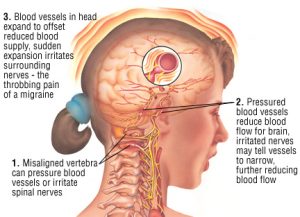 Taking this medicine with other drugs that make you sleepy can worsen this effect. Ask your doctor before taking Neurontin with a sleeping pill, narcotic pain medicine, muscle relaxer, or medicine for anxiety, depression, or seizures.
Taking this medicine with other drugs that make you sleepy can worsen this effect. Ask your doctor before taking Neurontin with a sleeping pill, narcotic pain medicine, muscle relaxer, or medicine for anxiety, depression, or seizures.
Other drugs may interact with gabapentin, including prescription and over-the-counter medicines, vitamins, and herbal products. Tell each of your health care providers about all medicines you use now and any medicine you start or stop using.
What happens if I miss a dose?
Take the missed dose as soon as you remember. Be sure to take the medicine with food. Skip the missed dose if it is almost time for your next scheduled dose. Do not take extra medicine to make up the missed dose.
What happens if I overdose?
Seek emergency medical attention or call the Poison Help line at 1-800-222-1222.
What should I avoid while taking Neurontin?
This medicine may impair your thinking or reactions. Be careful if you drive or do anything that requires you to be alert.
Avoid taking an antacid within 2 hours before or after you take Neurontin. Antacids can make it harder for your body to absorb gabapentin.
Drinking alcohol with this medicine can cause side effects.
How to Take Gabapentin ?
Neuropathic pain is a chronic debilitating pain syndrome that is complex to treat. Current medication management for neuropathic pain includes select neuromodulating agents such as anticonvulsants, serotonin norepinephrine reuptake inhibitors, tricyclic antidepressants, and certain opioids. Gabapentin remains among the most commonly used anticonvulsants for neuropathic pain.
The established therapeutic dosing for gabapentin in neuropathic pain trials is 1800-3600 mg/day in 3 divided doses in patients with normal renal function.3 This means the minimum effective dose is 600 mg 3 times a day. Renal adjustments are recommended in patients with CrCl below 60 mL/min.
For patients on dialysis, gabapentin can often be 3 times weekly following dialysis.
Several cross-sectional studies have reported gabapentin being used in subtherapeutic doses among most patients. In a retrospective analysis of 939 patients with post-herpetic neuralgia, the mean daily dose of gabapentin was 826 mg. In another 2-year retrospective study of 151 veterans with various neuropathic pain syndromes, the median daily dose for gabapentin was 900 mg. In both studies, the most prevalent gabapentin dosing was half the therapeutic dosing.
The cornerstones of effective pharmacotherapy are the right patient, the right drug, and the right dose. If an analgesic medication is being used at a suboptimal dose, oftentimes a knee-jerk reaction is to add another analgesic for synergy. While this may well be indicated under appropriate circumstances, it is inappropriate without maximizing the dose of each single agent with careful attention to dose titration in order to minimize toxicity of each add-on.
Consider for example a patient who starts low dose gabapentin that was not properly titrated, returns for follow-up and is given an additional prescription for duloxetine for neuropathic pain since gabapentin “does not work,” assuming there are no tolerability issues. This adds to polypharmacy, increased costs, and the pain remains inadequately treated.
Pharmacists as medication experts can collaborate with prescribers to optimize the rational use of gabapentin in neuropathic pain. First, let’s take a look into the pharmacology of gabapentin.
Gabapentin is a gaba aminobutyric acid (GABA) analogue anticonvulsant but does not exhibit any significant agonistic effects at the GABA receptor.9 Gabapentin inhibits the alpha-2-delta subunit of the N-type voltage-gated calcium channels. Receptor binding causes presynaptic inhibition of excitatory neurotransmitter release (i.e. glutamate) thereby attenuating neuropathic pain.
Gabapentin’s counterpart, pregabalin, shares the same mechanism of action but there are key pharmacologic differences between both medications. Gabapentin has saturable, non-linear absorption kinetics, where bioavailability decreases as the dose increases.10 Following oral administration, gabapentin’s bioavailability is 60%, 47%, 34%, and 33%, following 900, 1200, 2400, and 3600 mg/day in 3 divided doses, respectively. On the other hand, pregabalin has ≥90% bioavailability irrespective of the dose, leading to more predictable kinetics. Pregabalin boasts a binding affinity for the alpha-2-delta receptor that is six times greater than that of gabapentin.
What Every Patient Should Know
Patients should be aware of the therapeutic dosing for neuropathic pain to establish realistic expectations and improve compliance and likelihood of remaining on therapy. The conversation may be as follows: “Gabapentin may reduce nerve pain at 600 mg 3 times a day but patients usually start on a low dose to make sure they tolerate it and is then increased slowly to give the body a chance to get used to it.
If dose increases along the titration cause intolerable side effects such as dizziness or drowsiness, this can often be overcome by reducing back to the previous dose and escalating more slowly over a longer period of time.” Patients should be encouraged to follow-up with their prescriber for continued titration.
Gabapentin Is Not a “PRN” Medication
Another mishap with gabapentin that contributes to treatment failure is when patients take it on an as needed basis. Gabapentin exhibits its activity by impeding calcium trafficking and is required to be present at the alpha-2-delta receptor for 17-20 hours in order to ensure efficacy. Therefore, gabapentin needs to be taken around the clock to exert its analgesic effects rather than used on an as needed basis. This is another area that pharmacists can educate patients at initiation of therapy to improve compliance.
Gabapentin Abuse
Despite its therapeutic role in neuropathic pain, gabapentin produces psychoactive effects and has an abuse liability. Gabapentin abuse typically involves taking higher doses in a single administration. The median single dose for gabapentin abuse is 3600 mg, which is 3 times the maximum recommended single dose of 1200 mg. Risk factors for gabapentin abuse include current or previous opioid abuse, previous cocaine use, and/or concurrent use of benzodiazepines or cannabis. Alcohol use disorder is not generally a predictor of gabapentin abuse.
In conclusion, pharmacists as medication experts are well-poised to educate prescribers and patients on therapeutic dosing of gabapentin to optimize its rational and appropriate use for treating neuropathic pain.
Neurontin interaction with other medications
With simultaneous use of Neurontin and morphine it was observed an increase of 44% of the mean AUC of gabapentin compared monotherapy with the drug Neurontin. This was accompanied by an increase in pain threshold.
The clinical significance of such a change has not been established, and the pharmacokinetic characteristics of morphine were unchanged. Side effects of the drug during a joint taking with the drug Neurontin had no differences from those at the use of morphine together with the placebo.
Interactions between Neurontin and phenobarbital, phenytoin, valproic acid and carbamazepine were not noted.
The simultaneous use of Neurontin and oral contraceptive which contain norethindrone and / or ethinyl estradiol was not accompanied by any changes in the pharmacokinetics of the two components.
Overdose
When taking once Neurontin at a dose of 49 grams the following symptoms were observed:
-
- dizziness,
- double vision,
- speech disorder
- drowsiness,
- lethargy,
- mild diarrhea.
In experimental studies, the lethal dose of Neurontin ingestion has not been established in mice and rats that received the drug at doses up to 8 thousand mg / kg. Symptoms of acute toxicity in animals were the ataxia, ptosis, difficulty breathing, hypoactivity, or excitation.
Overdose should be treated with symptomatic therapy. Patients with renal failure in severe it’s better to hold hemodialysis.
What is Gabapentin Used for ?
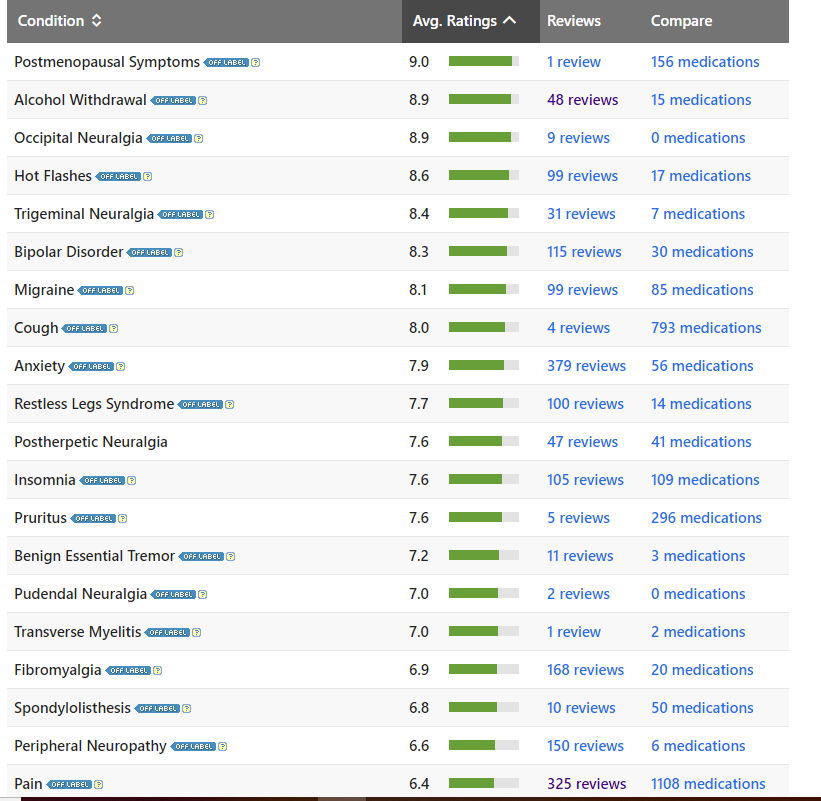
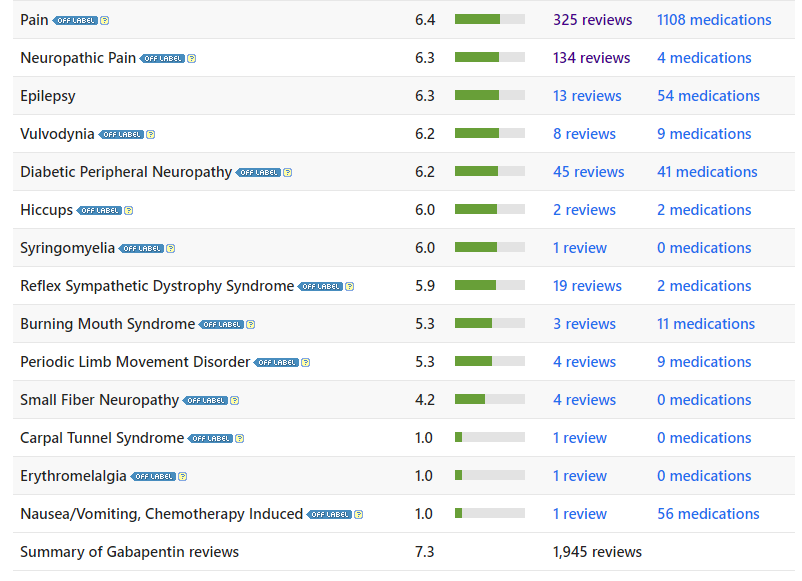
Gabapentin can be used for
-
- Postmenopausal Symptoms
- Alcohol Withdrawal
- Occipital Neuralgia
- Hot Flashes
- Trigeminal Neuralgia
- Bipolar Disorder
- Migraine
- Cough
- Anxiety
- Restless Legs Syndrome
- Postherpetic Neuralgia
- Insomnia
- Pruritus
- Benign Essential Tremor
- Pudendal Neuralgia
- Transverse Myelitis
- Fibromyalgia
- Spondylolisthesis
- Peripheral Neuropathy
- Pain
- Neuropathic Pain
- Epilepsy
- Vulvodynia
- Diabetic Peripheral Neuropathy
- Hiccups
- Syringomyelia
- Reflex Sympathetic Dystrophy Syndrome
- Burning Mouth Syndrome
- Periodic Limb Movement Disorder
- Small Fiber Neuropathy
- Carpal Tunnel Syndrome
- Can I drive or ride a bike after I take Gabapentin ?
- Do I need to stay on the same brand of Gabapentin?
- How and when to take Gabapentin ?
- Risks of taking Gabapentin during pregnancy and when breastfeeding
- Presence of other health conditions that affect Gabapentin
- Gabapentin Interactions with other medications and substances
- What is the maximum daily dosage of Gabapentin?
- Does Gabapentin cause constipation?
- Does gabapentin help you sleep?
- Is gabapentin a narcotic/controlled substance?
- What happens when you suddenly stop taking gabapentin?
- Does gabapentin cause weight gain?
- How long does it take gabapentin to work?
- Is gabapentin considered a painkiller?
- Does gabapentin help nerve pain?
- Why Is Lyrica a Controlled Substance?
- What’s the difference between Lyrica and Gabapentin ?
- Gabapentin interactions with medicines
- NT16 Neurontin 600mg, NT26 Neurontin 800mg – Pfizer U.S. Pharmaceuticals Group
- T1 Gabapentin 600mg, T3 Gabapentin 800mg – Ascent Pharmaceuticals, Inc.
- NT16 Gabapentin 600mg, NT26 Gabapentin 800mg – Greenstone LLC
- G6 Gabapentin 600mg, G8 Gabapentin 800mg – Ascend Laboratories, LLC
- Logo 4443 600 (Gabapentin 600mg), Logo 4444 800 (Gabapentin 800 mg) – Teva Pharmaceuticals USA
- 2 04 Gabapentin 800mg, 2 02 Gabapentin 600mg – Sun Pharmaceutical Industries Inc.
- X 93 Gabapentin 800 mg, X 92 Gabapentin 600 mg – Ranbaxy Pharmaceuticals Inc.
- APO Gabapentin 600mg, APO Gabapentin 800mg – Apotex Corporation
- Gabapentin 600mg, 800mg – Greenstone Limited
- Gabapentin 800mg, Gabapentin 600mg – Actavis Pharma, Inc.
- Gabapentin 600mg, Gabapentin 800mg – InvaGen Pharmaceuticals, Inc
- Gabapentin 600mg, 800mg – Zydus Pharmaceuticals (USA) Inc.
- Gabapentin 600 mg, 800mg – Solco Healthcare U.S., LLC
- Gabapentin 600 mg, Gabapentin 800 mg – ScieGen Pharmaceuticals, Inc.
- Gabapentin 800mg , Gabapentin 600mg – Aurobindo Pharma USA, Inc.
- Gabapentin 600mg, 800mg – Glenmark Pharmaceuticals Inc.
- Gabapentin 800mg, Gabapentin 600mg – CSPC OUYI Pharmaceutical Co.
- Gabapentin Dosage Guide
- Gabapentin is an Addiction Treatment Medication
- What is the side effects of Gabapentin ?
- Who is not suitable for Ordering Gabapentin Online ?
- Gabapentin Action of Mechanism
- Gabapentin Side Effects
- Gabapentin can be used to treat more than 30 diseases
- Gabapentin for Fibromyalgia
- Gabapentin enhances slow-wave sleep in patients with primary insomnia
- What is Migraine ?
Using Gabapentin For Anxiety
Gabapentin Dosage for Anxiety
When you are prescribed Gabapentin to treat your anxiety, your doctor will determine the correct dosage necessary for you. Additionally, doctors will usually start with a lower dose of Gabapentin and gradually increase to the dosage that will become their full intake. Gabapentin comes in capsules of 100, 300, and 400 mg. Gabapentin tablets are available in 100, 300, 400, 600, and 800 mg. Do not change your dosage or stop taking your medications without talking to your doctor first. According to MedicineNet, the starting dose for treating anxiety is 0.25-0.5 mg 3 to 4 times daily using immediate release tablets. The dose may be increased every 3-4 days to a maximum dose of 4 mg daily. The starting dose for treating panic attacks is 0.5 mg 3 times daily.
How Long Does Gabapentin Take to Work for Anxiety
The effectiveness of Gabapentin is different for everyone, again also depending on the severity of your anxiety amongst other factors. The average timeline for effectiveness is about 3 weeks, but it could be sooner or later. It is important to remember that while Gabapentin may be helpful for some, it may not be helpful for you. If you want to consider using Gabapentin, consult your doctor and together you can make the best decisions regarding treating your anxiety.
Who can and cannot take gabapentin – Brand name: Neurontin
Who can take gabapentin
Gabapentin can be taken by most adults and children aged 6 and over.
Who may not be able to take gabapentin
Gabapentin is not suitable for some people.
To make sure it’s safe for you, tell your doctor if you:
- have ever had an allergic reaction to gabapentin or any other medicine
- have ever misused or been addicted to a medicine
- are trying to get pregnant or are already pregnant
- are on a controlled sodium or potassium diet, or your kidneys do not work well (gabapentin liquid contains sodium and potassium, so speak to your doctor before taking it)
Pregnancy, breastfeeding and fertility while taking gabapentin – Brand name: Neurontin
Gabapentin and pregnancy
Gabapentin is not generally recommended in pregnancy as there is not enough information about whether it’s safe for your baby.
However, from the small amount of information that is available, there’s no clear evidence that it’s harmful. It should only be taken if the benefits of the medicine outweigh the risks.
If you take gabapentin for epilepsy, it’s important that this is well treated during pregnancy, as seizures can harm you and your baby. Keep taking gabapentin, but talk to your doctor urgently. They may recommend you change to a different medicine.
If you’re trying to get pregnant or have become pregnant while taking gabapentin, it is recommended to take a high dose of folic acid (5mg a day). You can get this from your doctor or midwife.
Ideally you’ll take high dose folic acid for 3 months before you start trying to get pregnant and for the first 12 weeks of pregnancy. Do not worry if you have not taken it before you get pregnant, but start taking it as soon as possible once you know that you are pregnant. It helps your baby to grow normally.
If you take gabapentin around the time of giving birth, your baby may need extra monitoring for a few days after they’re born. This is because they may have withdrawal symptoms from gabapentin.
We do not know what the long term effects of taking gabapentin in pregnancy may be on childhood learning and development. For safety, you’ll usually be advised to take it only if the benefits of the medicine outweigh the risks. Talk to your doctor about the benefits and risks.
Gabapentin and breastfeeding
If your doctor or health visitor says your baby is healthy, you can take gabapentin while breastfeeding. It’s important to keep taking gabapentin to keep you well.
Gabapentin passes into breast milk in small amounts. It has not been known to cause any side effects in breastfed babies.
If your baby is not feeding as well as usual, seems unusually sleepy, has a stomach upset, or if you have any other concerns about your baby, talk to your doctor, pharmacist, health visitor or midwife.
Gabapentin and fertility
There’s no evidence to suggest that taking gabapentin reduces fertility in either men or women. However, discuss your pregnancy plans with a doctor. They may wish to review your medicine and prescribe a higher dose of folic acid for you to take (5mg a day) before you become pregnant.
Speak to a pharmacist or your doctor before taking gabapentin if you’re trying to get pregnant.
What do people use gabapentin for?
Gabapentin’s primary use is to prevent or control seizures. It works by calming nerve activity to reduce seizure intensity or occurrence.
Children and adults can take this drug. The brand-name drug Neurontin can treat one form of epilepsy in children as young as 3 years old. Some people take other medications with gabapentin to control epilepsy symptoms.
Gabapentin can also help reduce post-herpetic neuralgia, which refers to a burning or stabbing nerve pain that is a common complication of shingles.
According to one 2017 review, oral gabapentin can reduce moderate or severe nerve pain that results from shingles or diabetes at a minimum daily dosage of 1,200 milligrams.
Extended-release gabapentin (Horizant) tablets can treat RLS, which is a condition characterized by uncomfortable sensations in the legs and a strong or irresistible urge to move the lower limbs.
A 2016 study also suggests that gabapentin combined with oxycontin, which is an opioid pain reliever, can help control pain and increase the quality of life for people with severe cancer pain. However, doctors do not typically prescribe gabapentin for this purpose.
Fioricet Side effects
Gabapentin can cause mild side effects. According to the 2017 review, these effects were slightly more common in people taking gabapentin than a placebo.
The most common side effects, occurring in around 10% of participants taking gabapentin, were:
-
- dizziness
- sleepiness
- water retention, which refers to swelling of the arms, hands, legs, and feet
- difficulty walking
Children and older adults may be more susceptible to adverse reactions associated with gabapentin.
Some other possible side effects include:
-
- back or chest pain
- constipation
- diarrhea
- vomiting
- upset stomach
- increased appetite and weight gain
- blurry vision
- bruising
- changes in mood
- chills
- a cough
- fatigue
- fever
- flu-like or cold-like symptoms
- hoarseness and dry mouth
- memory loss
- mouth ulcers
- shortness of breath
- a sore throat and swollen glands
- trembling
- urinary problems
- weakness
- uncontrollable eye rolling
In children, some of the more common adverse reactions include:
-
- anxiety, depression, or other mood changes
- behavioral problems
- changes in performance at school
- hyperactivity
- a lack of concentration
Risk of overdose of Gabapentin
Despite research in this area, it is not always clear whether suicidal behaviors in people who take gabapentin are a result of the drug itself or related to an existing mental health condition.
It is clear, however, that the risk of overdose from the drug is higher if a person also has a mental health condition such as depression.
In addition, when taking gabapentin, a person should monitor themselves carefully to make sure that they are not accidentally taking the wrong dosage.
People should also check on loved ones and minors taking this medication and seek help if there is any concern that they may have suicidal thoughts or behaviors.
Data from U.S. poison centers show that between 2012 and 2017, the number of suspected intentional suicide attempts from a gabapentin overdose grew by 80.5%.
According to the FDA, there have been reports of oral overdoses from taking up to 49 grams of the drug.
Symptoms of an overdose may include:
-
-
- sleepiness
- lethargy
- double vision
- slurred speech
- diarrhea
- coma, in cases when someone has chronic renal failure and has received treatment with Neurontin
-
